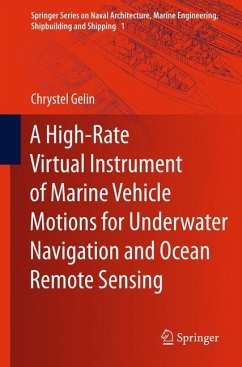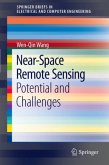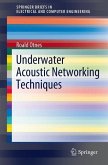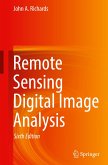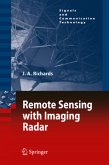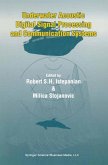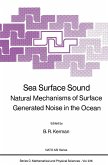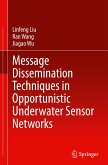Dead-Reckoning aided with Doppler velocity measurement has been the most common method for underwater navigation for small vehicles. Unfortunately DR requires frequent position recalibrations and underwater vehicle navigation systems are limited to periodic position update when they surface. Finally standard Global Positioning System (GPS) receivers are unable to provide the rate or precision required when used on a small vessel. To overcome this, a low cost high rate motion measurement system for an Unmanned Surface Vehicle (USV) with underwater and oceanographic purposes is proposed. The proposed onboard system for the USV consists of an Inertial Measurement Unit (IMU) with accelerometers and rate gyros, a GPS receiver, a flux-gate compass, a roll and tilt sensor and an ADCP. Interfacing all the sensors proved rather challenging because of their different characteristics. The proposed data fusion technique integrates the sensors and develops an embeddable software package, using real time data fusion methods, for a USV to aid in navigation and control as well as controlling an onboard Acoustic Doppler Current Profiler (ADCP). While ADCPs non-intrusively measure water flow, the vessel motion needs to be removed to analyze the data and the system developed provides the motion measurements and processing to accomplish this task.
From the reviews:
"The author details an interesting framework for fusing those heterogeneous data sources to obtain improved position and orientation state information. Signal filtering constitutes the other focus of the book. ... The fact that the book deals with the author's own research gives weight to the story and permits us to understand the hidden work in maritime robotics projects. Clearly, this book would be very useful for research purposes. It has a clear structure and can be easily followed." (Ramon Gonzalez Sanchez, ACM Computing Reviews, December, 2012)
"The author details an interesting framework for fusing those heterogeneous data sources to obtain improved position and orientation state information. Signal filtering constitutes the other focus of the book. ... The fact that the book deals with the author's own research gives weight to the story and permits us to understand the hidden work in maritime robotics projects. Clearly, this book would be very useful for research purposes. It has a clear structure and can be easily followed." (Ramon Gonzalez Sanchez, ACM Computing Reviews, December, 2012)

